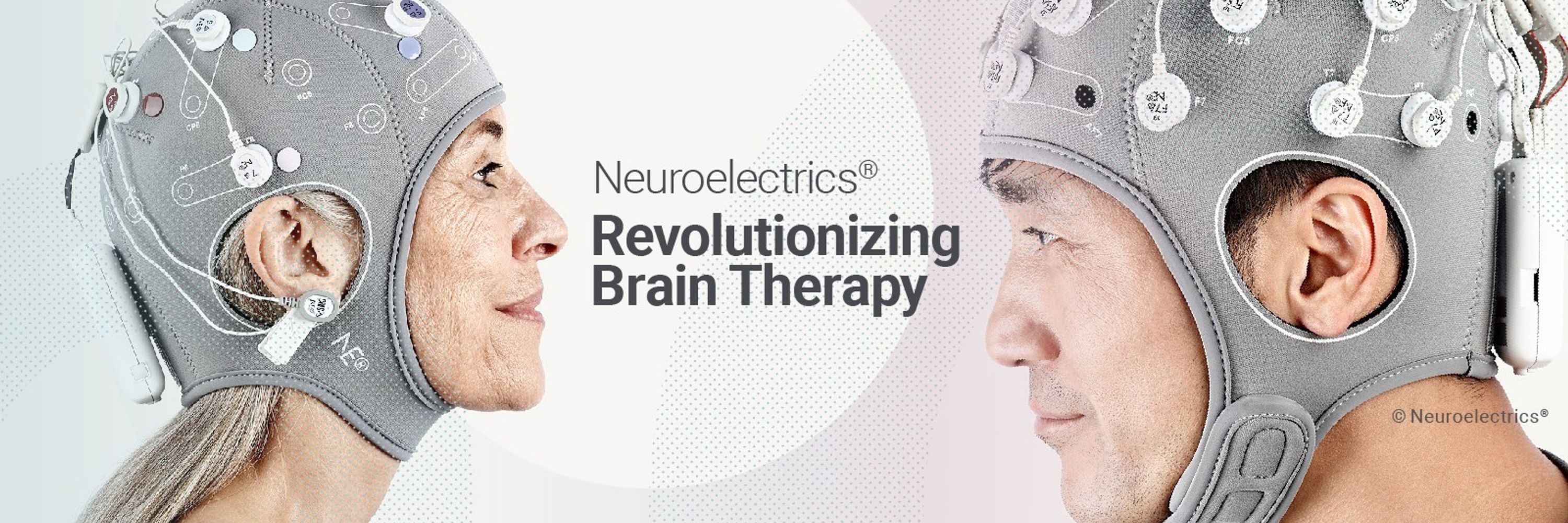
✉️ Contact us at [email protected]
Using our #Starstim, researchers applied anodal tDCS during perturbation-based training and found larger improvements in stability + reduced alpha power and N1 latency.
jneuroengrehab.biomedcentral.com/articles/10....
#tDCS #MotorLearning

Using our #Starstim, researchers applied anodal tDCS during perturbation-based training and found larger improvements in stability + reduced alpha power and N1 latency.
jneuroengrehab.biomedcentral.com/articles/10....
#tDCS #MotorLearning
With our #Starstim researchers applied 0–2 mA tACS at 20–100 Hz to study how electric fields induce phosphenes—visual flashes caused by stimulation of the retina
More: nature.com/articles/s41...
#tES #Neuroscience #Phosphene

With our #Starstim researchers applied 0–2 mA tACS at 20–100 Hz to study how electric fields induce phosphenes—visual flashes caused by stimulation of the retina
More: nature.com/articles/s41...
#tES #Neuroscience #Phosphene
Using our #Starstim, researchers explored how controlled brain stimulation can evoke phosphenes and sensations of movement—revealing how electric fields interact with #SensorySystems.
👉 aaltodoc.aalto.fi/server/api/c...
#tES
Using our #Starstim, researchers explored how controlled brain stimulation can evoke phosphenes and sensations of movement—revealing how electric fields interact with #SensorySystems.
👉 aaltodoc.aalto.fi/server/api/c...
#tES
A unified framework to guide EEG/MEG analysis, laminar modeling & tES/DBS planning.
A powerful read for anyone designing or interpreting neural simulations.
👉 www.neuroelectrics.com/blog/the-ros...
#NeuralModeling

A unified framework to guide EEG/MEG analysis, laminar modeling & tES/DBS planning.
A powerful read for anyone designing or interpreting neural simulations.
👉 www.neuroelectrics.com/blog/the-ros...
#NeuralModeling
🎥 youtu.be/d-WgPlTT_9g
#Neurotechnology #BrainHealth #Neuroscience #MovementScience

🎥 youtu.be/d-WgPlTT_9g
#Neurotechnology #BrainHealth #Neuroscience #MovementScience
A triple-blind RCT by González Rodríguez et al. used #Starstim (2 mA cathodal HD-tDCS over P3) + cognitive rehab to treat hemispatial neglect.
⚡️ Promising results!
🔗 doi.org/10.3791/67809
#HDtDCS #Neurorehab #BrainStimulation #JoVE
A triple-blind RCT by González Rodríguez et al. used #Starstim (2 mA cathodal HD-tDCS over P3) + cognitive rehab to treat hemispatial neglect.
⚡️ Promising results!
🔗 doi.org/10.3791/67809
#HDtDCS #Neurorehab #BrainStimulation #JoVE
🧠 In a simultaneous tDCS-fMRI study using #Starstim 143 subjects received CEN/DMN-targeted stimulation
⚡ Only CEN-tDCS altered co-activation patterns
📈 EF in the Salience Network predicted outcomes
🔗 sciencedirect.com/science/arti...

🧠 In a simultaneous tDCS-fMRI study using #Starstim 143 subjects received CEN/DMN-targeted stimulation
⚡ Only CEN-tDCS altered co-activation patterns
📈 EF in the Salience Network predicted outcomes
🔗 sciencedirect.com/science/arti...
Explore how a Variational Autoencoder helps interpret #SEEG data for #Epilepsy care — blending precision and explainability.
👉 Read more: www.neuroelectrics.com/blog/variati...
#SeizureDetection #DeepLearning #InterpretableAI #Neurotech

Explore how a Variational Autoencoder helps interpret #SEEG data for #Epilepsy care — blending precision and explainability.
👉 Read more: www.neuroelectrics.com/blog/variati...
#SeizureDetection #DeepLearning #InterpretableAI #Neurotech
Using Enobio, researchers developed MLAR-Net, a ResNet+attention model that nails emotion classification from single-channel #EEG
⚡ Real-time. Lightweight. Scalable.
#AI #EmotionRecognition
📄 ieeexplore.ieee.org/stamp/stamp....

Using Enobio, researchers developed MLAR-Net, a ResNet+attention model that nails emotion classification from single-channel #EEG
⚡ Real-time. Lightweight. Scalable.
#AI #EmotionRecognition
📄 ieeexplore.ieee.org/stamp/stamp....
Using our Starstim, researchers found distinct CBF changes with each modality in cLBP patients.
👏 Kudos to the authors!
📄 Read more: mdpi.com/2076-3425/15...
#tDCS #ChronicPain #Neuroimaging #CBF #Acupuncture
Using our Starstim, researchers found distinct CBF changes with each modality in cLBP patients.
👏 Kudos to the authors!
📄 Read more: mdpi.com/2076-3425/15...
#tDCS #ChronicPain #Neuroimaging #CBF #Acupuncture

Using our Starstim, researchers found distinct CBF changes with each modality in cLBP patients.
👏 Kudos to the authors!
#tDCS #ChronicPain #Neuroimaging #CBF #Acupuncture
📄 Read more: www.mdpi.com/2076-3425/15...
Using our Starstim, researchers found distinct CBF changes with each modality in cLBP patients.
👏 Kudos to the authors!
#tDCS #ChronicPain #Neuroimaging #CBF #Acupuncture
📄 Read more: www.mdpi.com/2076-3425/15...
🧠 Discover how even a simple demi-plié activates the #brain differently depending on what comes next.
👉 www.neuroelectrics.com/blog/what-ha...
#EEG #Neuroscience #DanceScience #Ballet

🧠 Discover how even a simple demi-plié activates the #brain differently depending on what comes next.
👉 www.neuroelectrics.com/blog/what-ha...
#EEG #Neuroscience #DanceScience #Ballet
Using our Starstim (www.neuroelectrics.com/products/res...), anodal L-DLPFC tDCS boosted accuracy—but only in expert players.
👏 Great work!
#tDCS #SportsScience #DecisionMaking #BrainPerformance
Using our Starstim (www.neuroelectrics.com/products/res...), anodal L-DLPFC tDCS boosted accuracy—but only in expert players.
👏 Great work!
#tDCS #SportsScience #DecisionMaking #BrainPerformance
Using our Starstim, DTI-guided MNS led to ↑ attention, speed & frontal activation vs. controls.
📄 Read the full study here: bmcmedicine.biomedcentral.com/articles/10....
#tACS #BipolarDisorder #Neurostimulation #CognitiveEnhancement

Using our Starstim, DTI-guided MNS led to ↑ attention, speed & frontal activation vs. controls.
📄 Read the full study here: bmcmedicine.biomedcentral.com/articles/10....
#tACS #BipolarDisorder #Neurostimulation #CognitiveEnhancement
#Stroke can happen to anyone, anytime, anywhere — yet most are preventable.
Let’s raise awareness and work together for better brain health. 💜
#StrokeAwareness #BrainHealth #Neuroelectrics

#Stroke can happen to anyone, anytime, anywhere — yet most are preventable.
Let’s raise awareness and work together for better brain health. 💜
#StrokeAwareness #BrainHealth #Neuroelectrics
Using our Starstim, anodal tDCS over dlPFC boosted accuracy +12%, EEG gamma +174%, beta +85%, theta +56%.
👏 Kudos to the authors! 📄 Read + researchgate.net/publication/...
#tDCS #EEG #CognitiveEnhancement #Neuroplasticity

Using our Starstim, anodal tDCS over dlPFC boosted accuracy +12%, EEG gamma +174%, beta +85%, theta +56%.
👏 Kudos to the authors! 📄 Read + researchgate.net/publication/...
#tDCS #EEG #CognitiveEnhancement #Neuroplasticity
Our new blog post breaks down how neural mass models reveal EEG biomarkers that could help detect the disease earlier.
👉 Read + neuroelectrics.com/blog/modelin...
#Alzheimers #EEG #BrainHealth #Neuroscience #Neurotech #Neuroelectrics

Our new blog post breaks down how neural mass models reveal EEG biomarkers that could help detect the disease earlier.
👉 Read + neuroelectrics.com/blog/modelin...
#Alzheimers #EEG #BrainHealth #Neuroscience #Neurotech #Neuroelectrics
From brain mapping to tES, discover how science is driving lasting recovery.
🎥 Resolutions That Last: NeuroTech Conquering Addiction
👉 youtube.com/watch?v=w7Bd...
#Neurotech #AddictionRecovery #BrainHealth #Neuroscience

From brain mapping to tES, discover how science is driving lasting recovery.
🎥 Resolutions That Last: NeuroTech Conquering Addiction
👉 youtube.com/watch?v=w7Bd...
#Neurotech #AddictionRecovery #BrainHealth #Neuroscience
Using our Starstim, HD-tDCS over the left DLPFC increased persistence-style control without altering mind-wandering rate.
📄 Read the full study here: www.authorea.com/doi/full/10....
#tDCS #MindWandering #CognitiveControl #Neurotech

Using our Starstim, HD-tDCS over the left DLPFC increased persistence-style control without altering mind-wandering rate.
📄 Read the full study here: www.authorea.com/doi/full/10....
#tDCS #MindWandering #CognitiveControl #Neurotech
Enobio EEG is now fully compatible with Persyst — enabling live EEG acquisition, advanced analysis, and automated spike & seizure detection in one seamless workflow.
www.linkedin.com/feed/update/...
A powerful step forward in #EEG and #Neurotech

Enobio EEG is now fully compatible with Persyst — enabling live EEG acquisition, advanced analysis, and automated spike & seizure detection in one seamless workflow.
www.linkedin.com/feed/update/...
A powerful step forward in #EEG and #Neurotech
Using our Starstim (www.neuroelectrics.com/products/res...), a 4-week RCT showed ↓ symptoms + ↑ frontal connectivity & network controllability vs. sham.
#tACS #Schizophrenia #Neurostimulation #GammaOscillations

Using our Starstim (www.neuroelectrics.com/products/res...), a 4-week RCT showed ↓ symptoms + ↑ frontal connectivity & network controllability vs. sham.
#tACS #Schizophrenia #Neurostimulation #GammaOscillations
A new MIT study suggests that every time we let #AI help us think or write, our brains may quietly adapt — in ways we don’t yet fully understand
Could convenience come at a cognitive cost?
👉 www.neuroelectrics.com/blog/how-cha...
#CognitiveScience

A new MIT study suggests that every time we let #AI help us think or write, our brains may quietly adapt — in ways we don’t yet fully understand
Could convenience come at a cognitive cost?
👉 www.neuroelectrics.com/blog/how-cha...
#CognitiveScience
With Enobio (neuroelectrics.com/products/res...), a CNN model detected eye blink episodes with up to 97% accuracy across 3 setups.
👏 Well done to Izabela Rejer & Izabela Gago!
📄 Read the full study here: iopscience.iop.org/article/10.1...
#DeepLearning #EyeBlink #SignalProcessing
With Enobio (neuroelectrics.com/products/res...), a CNN model detected eye blink episodes with up to 97% accuracy across 3 setups.
👏 Well done to Izabela Rejer & Izabela Gago!
📄 Read the full study here: iopscience.iop.org/article/10.1...
#DeepLearning #EyeBlink #SignalProcessing
In this RCT using our Starstim, tDCS + mirror therapy improved stroke recovery.
iPMC-tDCS: ↑ limb control, ↓ spasticity
iM1-tDCS: ↓ trunk compensation
👏 Kudos to the authors!
📄Full study: jneuroengrehab.biomedcentral.com/articles/10....
#tDCS #StrokeRecovery #Neurorehab #EEG

In this RCT using our Starstim, tDCS + mirror therapy improved stroke recovery.
iPMC-tDCS: ↑ limb control, ↓ spasticity
iM1-tDCS: ↓ trunk compensation
👏 Kudos to the authors!
📄Full study: jneuroengrehab.biomedcentral.com/articles/10....
#tDCS #StrokeRecovery #Neurorehab #EEG

